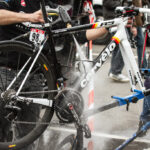Do you know how to inflate bike tire properly? If not, you are not alone. Many cyclists neglect this simple but essential task and end up risking their safety, performance, and comfort on the road. Inflating bike tires is not rocket science, but it does require some knowledge and skills.
You need to know the recommended tire pressure for your bike, the type of valve on your tire, and the right pump to use. You also need to follow some steps to inflate your tire correctly, without losing air or damaging your valve.
In this blog post, we will show you how to inflate a bike tire in 5 easy steps, whether you have a Schrader or a Presta valve.
What Valve Does My Bicycle Have?
If you own a bicycle, you may have wondered what kind of valve your bike has. A valve is a device that allows air to enter or exit the tire.
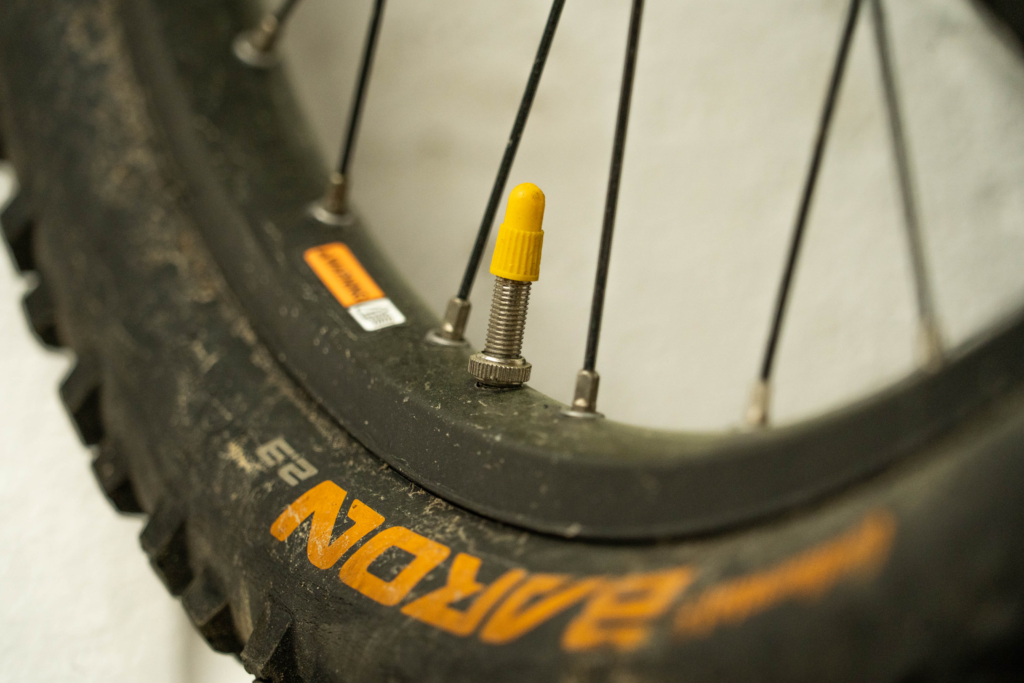
There are four main types of valves used in bicycles: Presta, Schrader, Woods, and Tubeless.
- Presta valves are narrow and have a metal cap that needs to be unscrewed before inflating.
- Schrader valves are wider and have a spring-loaded pin that opens when pressed.
- Woods valves are similar to Presta valves but have a rubber washer that seals the air.
- Tubeless valves are designed for tires that do not have inner tubes and have a removable core that can be replaced or cleaned.
Knowing what valve your bike has can help you choose the right pump.
How to Inflate Bike Tire?
Follow these steps on how to inflate bike tire with a pump:
Step 1: Find the Recommended Tire Pressure
The recommended tire pressure for your bicycle depends on several factors, such as the type of bike, the terrain, and the rider’s weight. To find the optimal PSI range for your tires, you can check the sidewall of the tire or the manufacturer’s website.

Generally, road bikes need higher pressure than mountain bikes, and smooth surfaces require less pressure than rough ones. You can also adjust the pressure according to your preference and comfort. A good rule of thumb is to keep the pressure between 25% and 35% of the maximum rating on the tire.
Step 2: Choose the Right Bike Pump
A bicycle pump is an essential tool for any cyclist, but not all pumps are the same. Before you buy a pump, you need to check if it is compatible with your valve type. There are two common types of valves: Presta and Schrader.

Some pumps can fit both types, while others need an adapter. You can find the valve type on the tire or the manufacturer’s website. To choose a good quality bike pump, you should consider some factors, such as size, weight, durability, ease of use, and pressure gauge.
Depending on your needs, you can opt for a floor pump, a mini pump, or a CO2 inflator. A good pump should be able to inflate your tires quickly and accurately, without leaking or breaking.
Step 3: Open the Valve
Opening the bike tire valve is a simple but important step before inflating or deflating your tires. The first thing you need to do is to remove the valve cap and store it in a safe place, such as your pocket or a small bag.
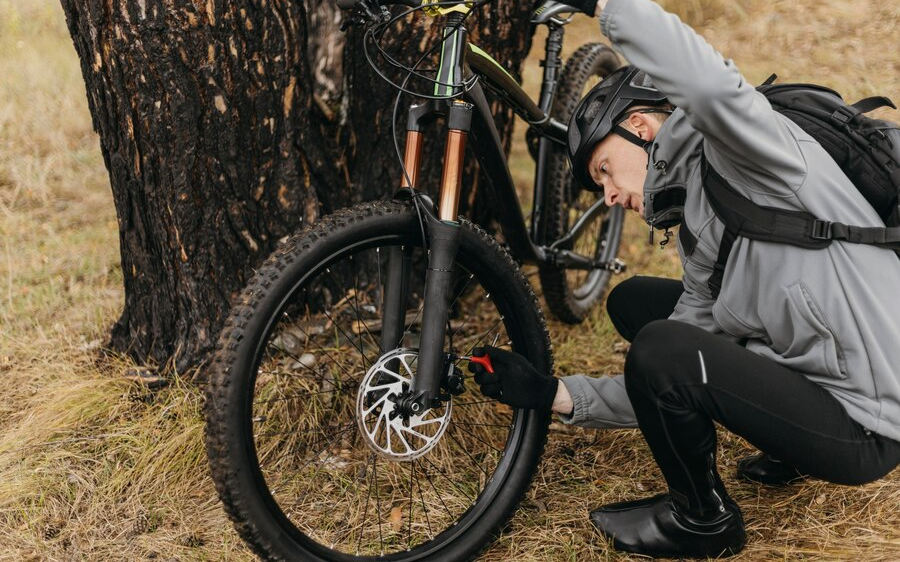
You don’t want to lose the cap, as it protects the valve from dirt and damage. Next, you need to open the valve depending on the type. There are four common types of valves: Presta, Schrader, Woods, and Tubeless.
For Presta valves, you need to unscrew the nut at the top of the valve and press it slightly to release some air. If you have Schrader valves press the pin in the center of the valve.
For Woods valves, you need to unscrew the cap and pull out the plunger. For Tubeless valves, you need to remove the core with a special tool and let the air escape.
Step 4: Attach the Pump Head and Inflate the Tire
After opening the bike tire valve, you need to attach the pump head to the valve securely and correctly. If your pump has a lever, make sure it is in the open position when you place the pump head over the valve, and then snap it into the closed position to lock it.
If your pump does not have a lever, make sure you push the pump head firmly onto the valve until it feels tight. To inflate the tire, use short bursts of air and check the pressure with a gauge or by feel.

You can find the recommended pressure range on the tire or the manufacturer’s website. To avoid losing air when detaching the pump head, do it quickly and carefully.
If your pump has a lever, open it before pulling the pump head off. If your pump does not have a lever, twist the pump head slightly as you pull it off.
Step 5: Close the Valve
The final step after inflating your bike tire is to close the valve and replace the cap. This is important to prevent dirt and debris from entering the valve and affecting the tire pressure. Depending on the type of valve, you need to follow different steps to close it.
For Presta valves, you need to screw the nut at the top of the valve and press it slightly to seal it. If you have Schrader valve, don’t need to do anything, the valve closes automatically. For Woods valves, you need to push the plunger back in and screw the cap on.
For Tubeless valves, you need to insert the core back with a special tool and tighten it. After closing the valve, you need to put the cap back on and make sure it fits snugly. This will protect the valve from damage and corrosion. Now repeat the process on the other tire.
Types of Bike Pumps
There are different types of bike pumps, each with its advantages and disadvantages. The most common types are floor pumps, mini pumps, CO2 inflators, and electric pumps.

Floor pumps are large and sturdy, and can pump a lot of air quickly. They are ideal for home use, but not very portable.
Mini pumps are small and lightweight and can fit in a backpack or attach to the bike frame. They are convenient for emergencies, but not very efficient.
CO2 inflators are devices that use compressed gas cartridges to fill the tire instantly. They are fast and easy, but not reusable.
Electric pumps are powered by batteries or electricity, and can automatically adjust the pressure. They are convenient and accurate, but not very common.
How to Inflate Bike Tire Without Pump?
Sometimes, you may find yourself with a flat tire and no pump. Don’t worry, there are some alternative ways to inflate your bike tire without a pump. One way is to use a compressed air canister, such as those used for cleaning keyboards or electronics.
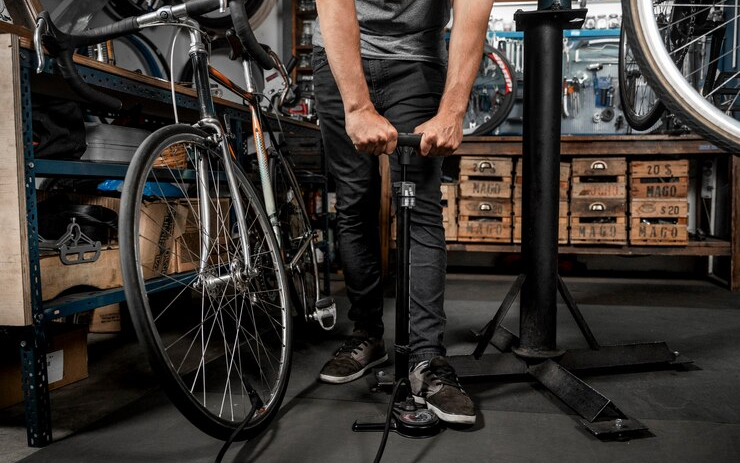
Simply attach the nozzle to the valve and release the air. Another way is to use a car tire inflator, which can be found at gas stations or car shops. Connect the hose to the valve and set the desired pressure.
A third way is to use a hand or foot pump, which can be borrowed from a friend or a nearby store. They are usually small and easy to use.
Troubleshooting
Inflating your bicycle tire is a simple task, but sometimes you may encounter some problems. One common issue is air leakage, which can occur if the valve is loose, damaged, or incompatible with the pump. To fix this, you need to tighten the valve, replace it, or use an adapter.
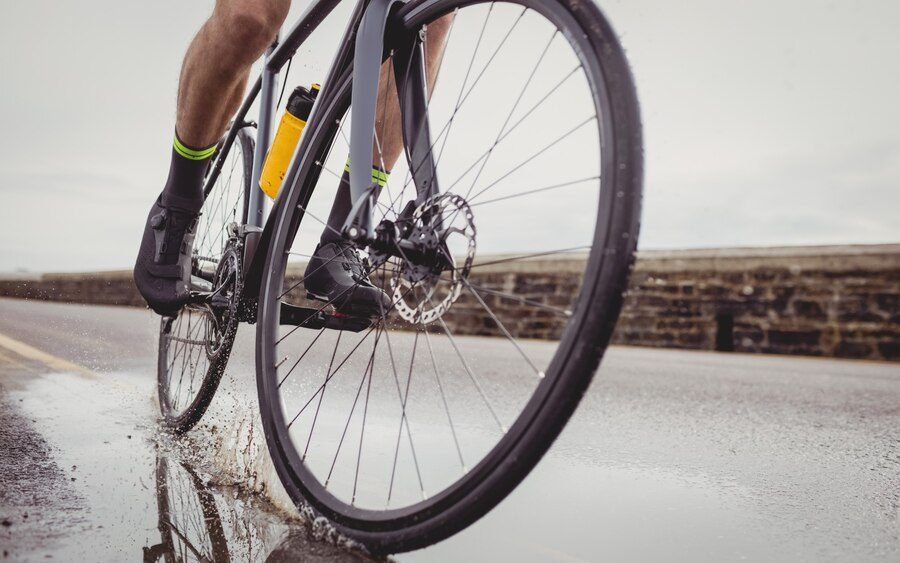
Another common issue is punctures or damage, which can cause the tire to lose air quickly or burst. To fix this, you need to remove the tire from the rim, inspect it for holes or cuts, and patch or replace it. You can also use a sealant to fill the gaps and prevent further leaks.
Tire Maintenance Tips
Your bicycle tires are one of the most important parts of your bike, as they affect your speed, comfort, and safety. To keep them in good condition, you need to follow some simple tire maintenance tips.
- Regularly check and maintain the tire pressure, as underinflated or overinflated tires can cause poor performance, flats, or blowouts. Use a gauge or a pump to measure and adjust the pressure according to the recommended level.
- Inspect the tire tread for wear, as worn-out tires can reduce traction, grip, and puncture resistance. Look for signs of cracking, bulging, or balding, and replace the tires if needed.
- Keep the pump and valves clean, as dirt and debris can clog them and prevent proper inflation. Use a cloth or a brush to wipe them off after each use.
- Store the bike properly to prevent tire damage, as exposure to heat, cold, or moisture can degrade the rubber. Keep the bike indoors, away from direct sunlight or rain, and hang it from the wall or ceiling to avoid pressure on the tires.
By following these tips, you can extend the life of your bicycle tires and enjoy a smooth ride.
Conclusion
Inflating your bike tire is a simple but important skill that can improve your riding experience and prevent accidents. You need to know the type of valve, the recommended pressure, and the steps to inflate the tire properly.
You also need to check the tire pressure regularly and before each ride. We hope this guide has helped you learn how to inflate bike tire with ease and confidence.
Let us know in the comments if you have any questions or feedback. We would love to hear from you!
FAQs
Remove the valve cap, press your tongue on the valve, and blow air.
Find the recommended PSI, choose the right nozzle, remove the valve cap, attach the pump, and inflate.
Unscrew the valve cap, fit the nozzle, inflate in short bursts, check the pressure, and replace the cap.
Yes, if your bike has a Schrader valve.


